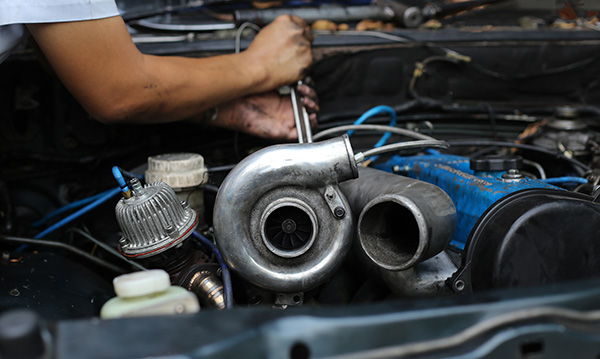
In automotive engineering, turbochargers are marvels of modern technology, elevating engine performance and efficiency to new heights. However, like any intricate machinery, turbochargers are prone to malfunctions that impede performance and reliability. We embark on a journey to solve the mysteries of turbocharger problems and address these issues effectively.
The Basics of the Turbocharger
Turbochargers operate on the principle of forced induction, utilizing exhaust gasses to spin a turbine connected to a compressor. This compressor pressurizes the intake air, allowing for greater power output from the engine. However, this intricate process can be disrupted by many factors, leading to a range of symptoms that signal underlying issues.
Symptoms of Turbocharger Problems
One of the first steps in troubleshooting turbocharger issues is recognizing the symptoms that indicate potential problems. While the manifestation of these symptoms may vary depending on the nature of the issue, there are several common indicators to watch out for. These include diminished engine performance, a noticeable loss of power and acceleration, and excessive smoke emanating from the exhaust, signaling potential oil leaks or burning. Peculiar sounds such as whining, grinding, or hissing noises may signify mechanical issues within the turbocharger assembly.
Investigating the Root Causes
To effectively address turbocharger problems, it's essential to identify their underlying causes. These can range from relatively mild issues such as clogged air filters or loose connections to serious malfunctions like oil contamination or bearing failure. Turbocharger problems often stem from inadequate lubrication or insufficient cooling, leading to premature wear and tear on critical components.
Resolving Turbocharger Woes
Once the symptoms and root causes of turbocharger problems have been identified, the next step is implementing appropriate solutions. Depending on the nature and severity of the issue, these solutions may vary significantly. Simple repairs or adjustments may be sufficient in minor problems such as boost leaks or wastegate issues. However, more severe issues such as bearing failure or turbine damage may necessitate component replacement or even a complete turbocharger overhaul.
Proactive Maintenance and Upgrade Strategies
In addition to addressing existing problems, proactive maintenance is key to ensuring your turbocharged vehicle's long-term health and performance. This includes regular inspection of key components, adherence to manufacturer-recommended service intervals, and vigilant monitoring of boost levels and exhaust temperatures.
For enthusiasts seeking to unlock the full potential of their turbocharged vehicles, aftermarket upgrades and performance enhancements offer an enticing opportunity to boost power output and reliability.
Don't let car troubles stall your journey. Trust Stang Auto Tech for expert repairs and maintenance. Schedule your visit today.